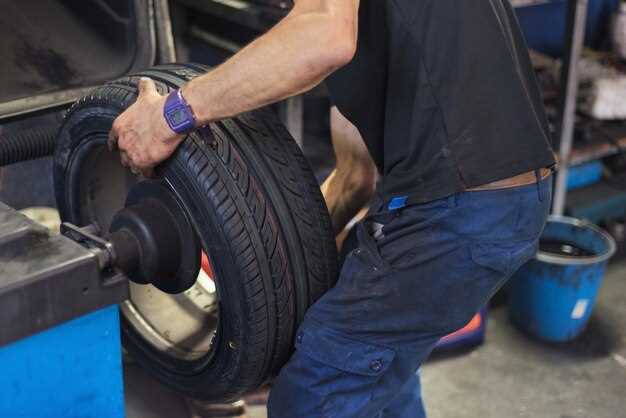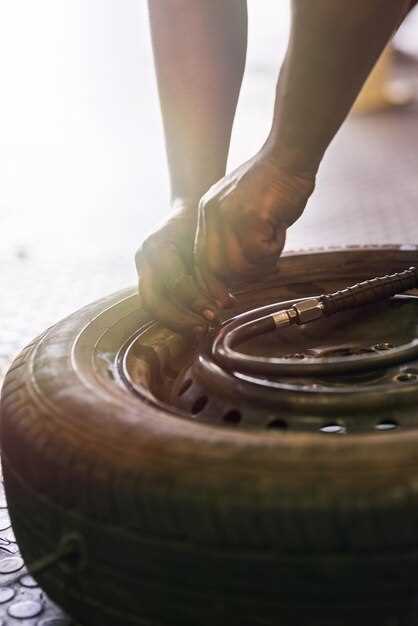
In the high-stakes world of motorsport, effective management of tire wear is crucial for achieving success in endurance races. Tires play a pivotal role in determining both the pace and stability of the vehicle throughout the event. Understanding the factors that contribute to tire wear can provide teams with a competitive edge, enabling them to devise strategies that prolong tire life while optimizing performance.
During endurance races, drivers and teams must consider various elements that affect tire degradation, including track conditions, driving style, and vehicle setup. Each component uniquely influences how tires interact with the road surface, leading to varying rates of wear. Therefore, adopting a proactive approach to tire management becomes essential for maintaining consistent lap times and ensuring the vehicle remains race-ready.
Implementing effective strategies involves a comprehensive understanding of tire compounds and their specific characteristics. Different types of tires offer varying levels of grip and durability, making it crucial for teams to select the right tires based on anticipated race conditions. Coupled with careful monitoring of tire pressure and temperature throughout the event, teams can significantly enhance their tire management capabilities, ultimately contributing to better overall results.
Monitoring Tire Temperature and Pressure for Optimal Performance
Effective management of tire temperature and pressure is essential for achieving optimal performance during endurance race events. Tires operate within a specific temperature range for optimal grip and longevity. Monitoring tire temperature allows teams to adjust their strategy proactively, ensuring that tires do not overheat, which can lead to reduced traction and premature wear.
Regularly checking tire pressure is equally important, as it directly impacts handling characteristics and tire life. Under-inflated tires can cause excessive flexing, leading to increased heat buildup and a risk of blowouts. Conversely, over-inflated tires can reduce the contact patch, negatively affecting grip and stability.
Using tire temperature sensors can provide real-time data, allowing teams to make quick decisions regarding pit stops and tire selection. Adjusting tire pressure based on track conditions and race strategy can enhance performance and prolong tire life, critical factors in endurance racing where every second counts.
Incorporating regular monitoring of tire conditions into race day routines not only optimizes individual tire performance but also contributes to the overall success of the racing team. By maintaining the correct temperature and pressure, teams can ensure their tires provide the necessary endurance to compete effectively throughout the race.
Adjusting Driving Techniques to Extend Tire Life During Endurance Races

In endurance racing, managing tire wear is crucial for maintaining performance throughout the event. By adjusting driving techniques, racers can significantly extend tire life while ensuring consistent lap times. One effective strategy involves smooth inputs on the steering wheel, throttle, and brakes. Gradual acceleration and deceleration reduce the stress on tires, minimizing excessive wear and heat buildup.
Additionally, understanding track conditions is essential. Drivers should adapt their lines and cornering techniques based on surface grip and tire performance. It is beneficial to optimize corner entry and exit speeds, which helps in maintaining tire integrity during prolonged use. Utilizing late apexes can also allow for a more balanced car setup, reducing the chance of understeer or oversteer that contributes to uneven tire wear.
Furthermore, maintaining a steady pace rather than pushing to the limit can prolong tire life. In endurance races, strategic pacing can be more advantageous than aggressive driving. Drivers can monitor their lap times and adjust their speeds accordingly, ensuring that tire degradation is kept at bay without sacrificing overall race performance.
It’s also important to communicate effectively with the pit crew. Noticing any changes in handling can indicate excessive tire wear. Timely feedback to the team allows for adjustments in strategy or tire management, highlighting the importance of driver awareness in extending tire life.
Lastly, regular practice and simulation can help drivers refine their techniques. Familiarity with the car’s handling characteristics, especially during long stints, enables better control and reduces tire wear. By integrating these driving adjustments, racers can maximize their tire performance and enhance their chances of success in endurance races.
Selecting the Right Tire Compound for Different Track Conditions

Effective management of tire wear is crucial during race events, as it directly impacts performance and overall race strategy. Each track presents unique conditions that influence the choice of tire compound, making it essential for teams to select wisely.
On dry tracks, where grip levels are high, softer compounds may be the optimal choice. These tires heat up quickly, providing better traction and responsiveness. However, they tend to wear out faster, necessitating careful monitoring of tire longevity throughout the race. Drivers must balance aggressiveness with tire management to maximize speed without compromising durability.
In contrast, wet or slippery conditions require a different approach. Tires designed for rain or mixed surfaces typically feature deeper tread patterns that aid in water displacement, preventing aquaplaning. While these compounds may not offer the same levels of grip as dry tires, they are essential for maintaining control and stability in adverse conditions. Transitioning to these compounds early in a race can lead to better overall management of tire performance.
Moreover, temperature plays a significant role in tire selection. Colder temperatures can lead to reduced grip and prolonged tire warming times. In such situations, teams might opt for compounds that perform better in lower temperature ranges, ensuring that drivers can achieve optimal performance despite less-than-ideal conditions.
Overall, the ability to select the right tire compound based on the specific track conditions is a critical aspect of tire management during race events. Teams that excel in this area not only enhance their performance but also increase their chances of success on the track.



